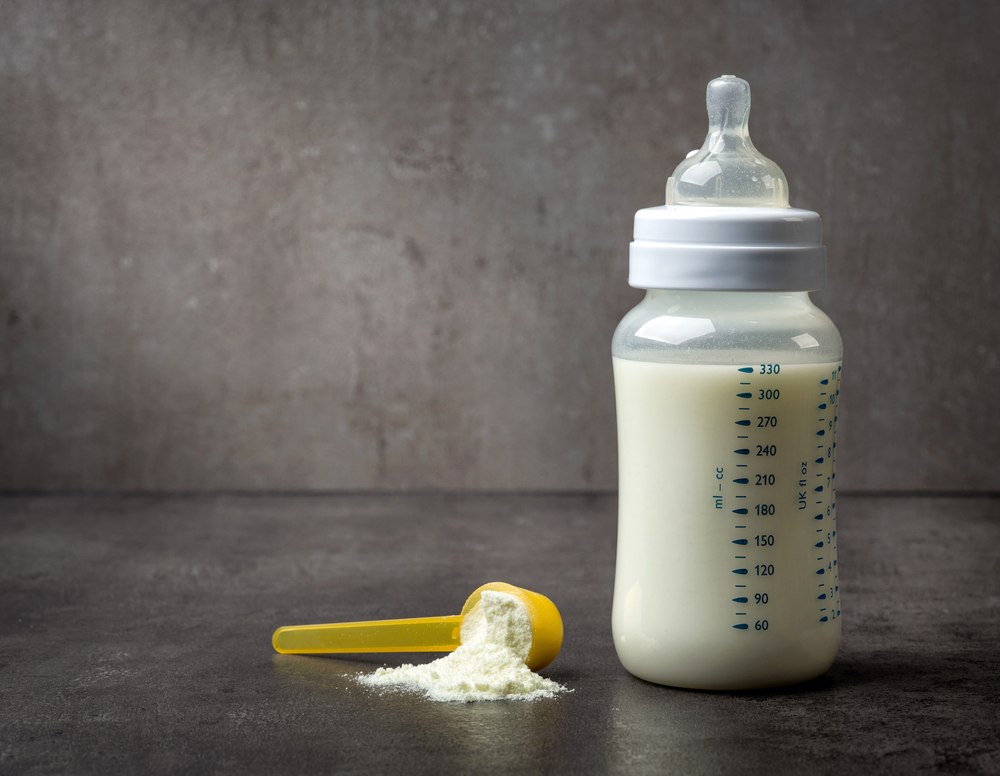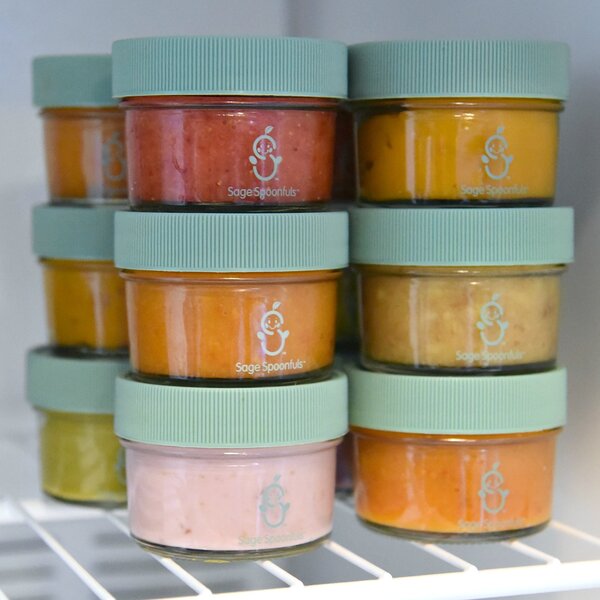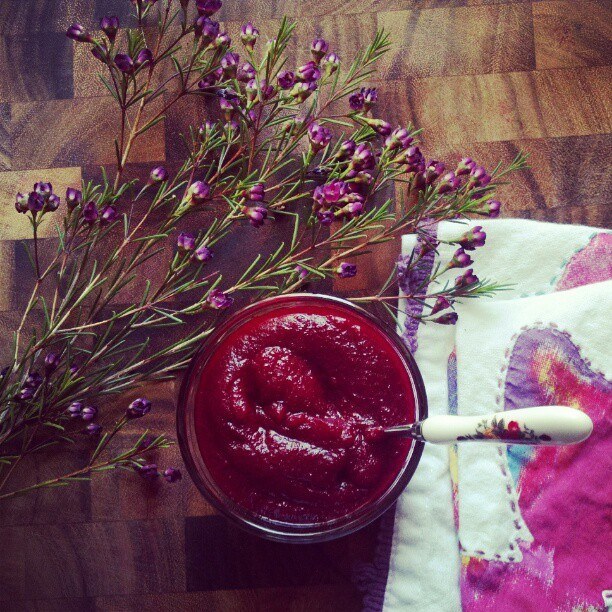Feed baby frogs
Tadpole to Frog Kit Directions
Welcome To Live Frog Growing KitWARNING: CHOKING HAZARD — Small parts. Not for children under 3 years
Congratulations: You are about to watch part of the incredible life cycle of a leopard frog! Expect the change from tadpole to frog to take approximately 12-16 weeks. The resulting frogs can live 5 years or more in captivity.
Changing from Tadpole to Froglet to Frog
Expect the change from tadpole to frog to take approximately 12-16 weeks. This change is called ‘metamorphosis.’ First, back legs will emerge from the tadpole. Gradually the tadpole will develop lungs and you’ll see some changes to the tadpole’s head like elevated eyes and a wider mouth. When the tadpole’s front legs develop it will stop feeding on tadpole food and its tail will begin to shrink. At this time it will start climbing partially out of the water. A tadpole that has front and back legs but still has a tail is called a “froglet. ” A froglet may stop eating tadpole food but not be ready to eat adult frog food yet. The froglet will get its nourishment from its tail as the tail is absorbed into its body. When the tail totally disappears it is now considered an adult frog and ready for it’s first frog meal.
Important: If the tadpole is slow to develop- feed more often; change the water more often; and/or place the habitat in a warmer area. Tadpole growth is directly related to the number of complete water changes you do.
When Your Tadpole Arrives
Your tadpole is a leopard frog tadpole. It looks like a little fish and lives entirely in the water.
These tadpoles need 1 gallon of water each so if you are providing your own habitat make sure it is large enough for your tadpole. If you ordered our complete kit with a habitat then you have the correct size. To prepare your habitat fill it around ¾ full of warm (not hot) tap water. Read the instructions on the water treatment so you add the correct amount.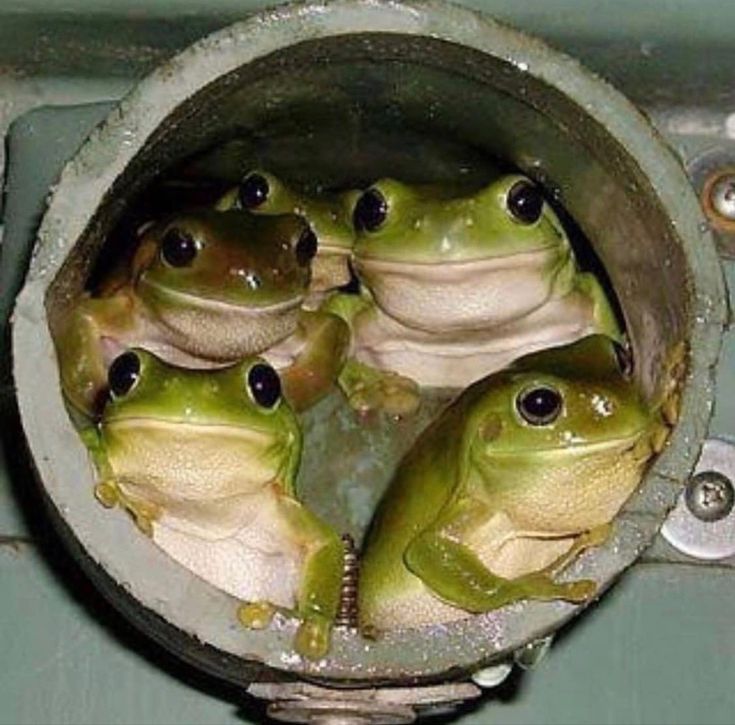 Add the water treatment solution into the water and stir. This step is very important because water can contain chemicals that are dangerous to tadpoles.
Add the water treatment solution into the water and stir. This step is very important because water can contain chemicals that are dangerous to tadpoles.
Before putting the tadpole in the habitat, let the treated water sit for at least 2 hours. This allows the water to become the same temperature as the water in the tadpole’s transport bag. After 2 hours, you can open the bag the tadpole came in and pour the entire contents into the habitat. Don’t be worried if there is no movement at first, it can take up to a day before the tadpole explores the habitat.
Important: Keep your habitat at room temperature (65 to 78 degrees F) and out of direct sunlight. Do not shake or tap on the habitat, as this is stressful for the tadpole.
Caring for Your Tadpole
FEEDING: The tadpole may not eat the 1st day in the habitat as it adjusts to its new home. The tadpole eats the tadpole food included with the kit. We have included all the food the tadpole will need. Tadpoles are vegetarians and in the wild they eat bits of algae and plants. Our tadpole food is great for them and will not decay or foul water as quickly as leafy foods. As it grows, the tadpole will need to eat more food. Start by feeding it one pellet of food, which should last about 3 days. You will need to increase the frequency you give the tadpole a food pellet as it grows. It is important not to overfeed the tadpole because left over food will decay and having dirty water will harm the tadpole. If you run out of food or misplace it, tadpoles love goldfish food from the local pet store.
Tadpoles are vegetarians and in the wild they eat bits of algae and plants. Our tadpole food is great for them and will not decay or foul water as quickly as leafy foods. As it grows, the tadpole will need to eat more food. Start by feeding it one pellet of food, which should last about 3 days. You will need to increase the frequency you give the tadpole a food pellet as it grows. It is important not to overfeed the tadpole because left over food will decay and having dirty water will harm the tadpole. If you run out of food or misplace it, tadpoles love goldfish food from the local pet store.
CLEANING THE HABITAT: Clean water is very important to the tadpole –most problems tadpoles have are caused by water that is not clean. Once a week, or more often if the water looks cloudy, change the habitat water. To do this, first wash your hands and rinse them well to make sure you have no soap or lotion on your hands that can get into the habitat when you remove the water.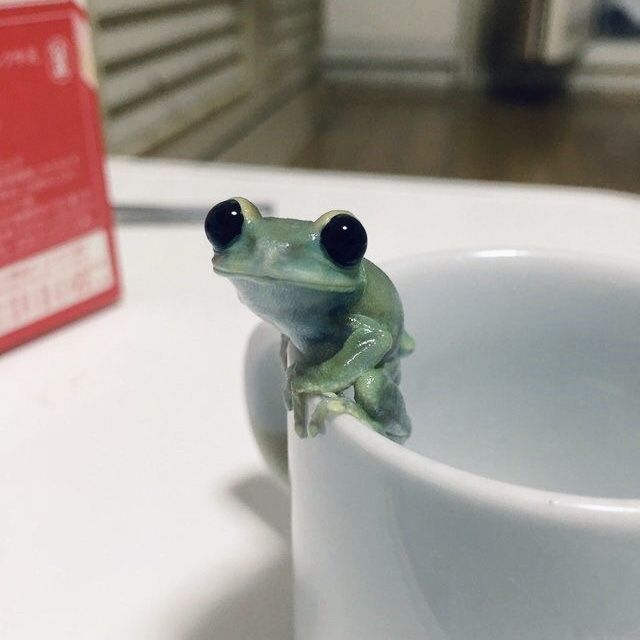 If you have our supply bag, there is a cup included or you can use your own cup. Use the cup to remove all but around 3 inches of water from the habitat. Then, scoop the tadpole into the cup with some water (about ½ cup full is OK) and set in a safe place. Pour out the rest of the dirty water from the habitat and rinse the habitat in the sink with warm water. Do not use soap or other cleaners in your habitat. Now refill the habitat with warm (not hot) tap water and add the water treatment solution. Let this treated water sit for 2 hours so it becomes the same temperature as the water in the cup with the tadpole in it. After 2 hours, you can pour the entire contents of the cup into the habitat.
If you have our supply bag, there is a cup included or you can use your own cup. Use the cup to remove all but around 3 inches of water from the habitat. Then, scoop the tadpole into the cup with some water (about ½ cup full is OK) and set in a safe place. Pour out the rest of the dirty water from the habitat and rinse the habitat in the sink with warm water. Do not use soap or other cleaners in your habitat. Now refill the habitat with warm (not hot) tap water and add the water treatment solution. Let this treated water sit for 2 hours so it becomes the same temperature as the water in the cup with the tadpole in it. After 2 hours, you can pour the entire contents of the cup into the habitat.
Important: Never use soap or other cleaners in your habitat. The residue can hurt tadpoles and frogs.
ADDING A ROCK OR BRANCH: When you see the tadpole has developed front legs as well as back legs, you will need to provide a way for it to rest outside of the water on dry ‘land’.
Without a resting spot it is forced to swim continually and it can drown now that it has developed lungs. Use the cup to remove all but about 3 inches of water from your habitat. Find either a rock or floating piece of wood that is large enough that it will stick out of the water and be dry on top. Rinse any excess dirt off of the rock or wood before placing in the habitat. Place the rock or wood so the new froglet has easy access to the dry ‘land’ and make sure the sides are not too high or steep for it to climb up on it. The rock or wood can take up as much as half of the habitat space. The other half should be water.
Caring for Your Frog
FEEDING: Sometimes a frog won’t eat for the first week so don’t worry. Frogs eat living insects and worms. They will not eat dead insects because they hunt based on movement of the prey. You can feed your frog crickets, mealworms or earthworms from the pet shop. Or you can collect your own insects like moths, sowbugs, flies or caterpillars.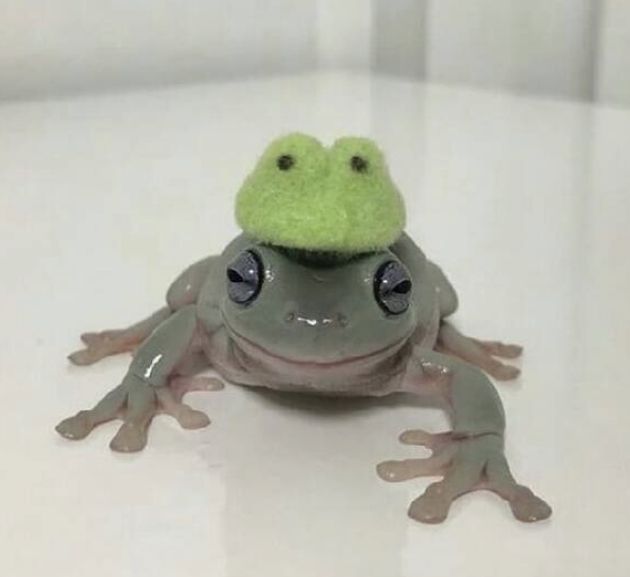 Only feed 1 or 2 at a time on the dry ‘land’ part of the habitat. Remove any dead insects from the habitat before adding more.
Only feed 1 or 2 at a time on the dry ‘land’ part of the habitat. Remove any dead insects from the habitat before adding more.
CLEARING THE HABITAT: Frogs need clean water just like the tadpole did. Continue to do a water change at least once a week like you did when it was a tadpole. When your frog is too big to stay in the cup during water changes, you will want to find an escape-proof small container for it to stay in during the water change.
ABOUT YOUR LEOPARD FROG: Frogs can live 5 years or more in captivity. An adult leopard frog can grow to 4 to 6 inches, but it takes years for them to get that big. Female leopard frogs are usually slightly larger than males, but it’s not really possible to tell which you have. Leopard frogs will not mate in your habitat because they do not mate until they are 5 years old and like special conditions not offered in your habitat.
CAN I PLAY WITH THE TADPOLE OR FROG?
No. A tadpole’s skin is fragile and is easily damaged if handled improperly. A frog is delicate and may escape or be injured during handling.
A frog is delicate and may escape or be injured during handling.
WHAT IF I CAN NO LONGER CARE FOR MY FROG?
Please do not release the frog outside. Your frog may not know how to survive in the wild because it has not learned to hunt on its own. Some suggestions: find a friend or neighbor who would like a pet frog, or donate it to a school for a wildlife display, or give it to a local pet shop who can possibly find it a home.
Frog Growing Kit Facts:
Q: Do you give a Guarantee?
A: Yes. We guarantee your tadpole will arrive alive. After it arrives we can no longer guarantee it as most problems with tadpoles come from improper water care.
Q: How long before I get my tadpole?
A: If your kit came with a certificate for a tadpole, mail, fax, or email it to us per the instructions. Allow 2 weeks for it to arrive.
Q: Can I order tadpoles during the winter?
A: We ship tadpoles year-round but only order your tadpole if it is above 40 degrees in your area.
Q: How many tadpoles can I put in my habitat?
A: Only 1 tadpole per gallon of water.
Q: My tadpole isn’t moving. Is it dead?
A: Probably not, it can take up to a day before the tadpole explores the habitat.
Q: How long does it take the tadpole to become a frog?
A: Approximately 12-16 weeks with weekly complete water changes.
Q: My tadpoles were doing fine and then next day they are dead. What happened?
A: This is usually a water problem. If you accidentally introduced hand lotion or soap into the habitat during a water change, or forgot to add the water treatment to tap water, or overfed and have dirty water for too long then it will harm your tadpoles.
Q: Do I need a heater, filter or gravel in my habitat?
A: No – room temperature water is best, filters may take away the tadpole’s food and gravel makes water changes very hard and isn’t necessary.
Q: Can I put a new tadpole in my habitat with a frog?
A: No, the frog may consider the tadpole to be food.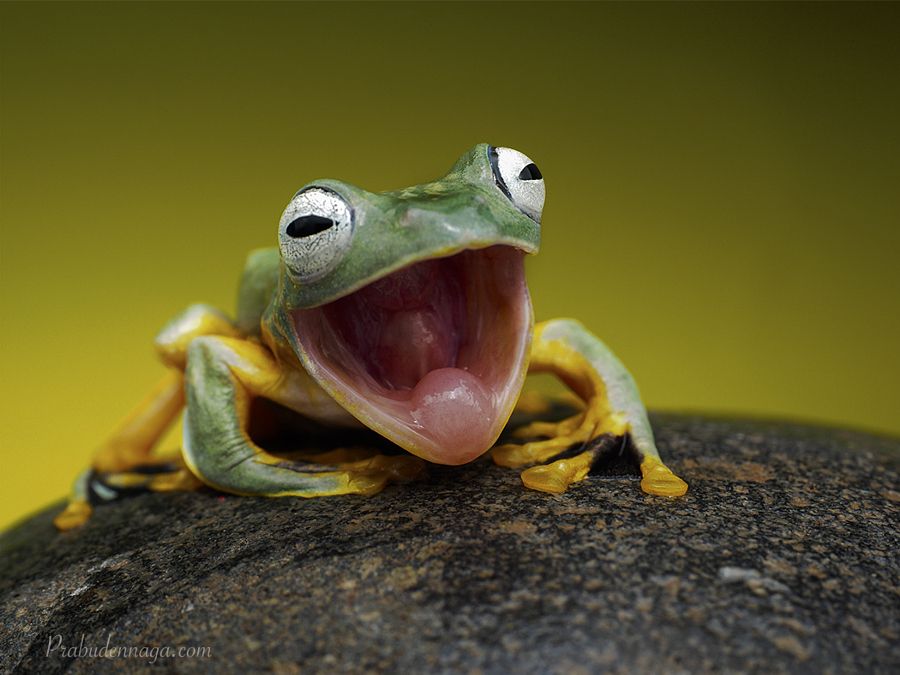
Q: What if I run out of tadpole food or water treatment solution?
A: Your local pet shop carries these – tadpoles like goldfish food and you can use any water treatment made for fish tanks that removes chlorine and neutralizes metals.
How to Care for Baby Frogs
By Jacob Reis | Updated September 26, 2017Baby frogs require special care, especially in feeding, to survive and live to adulthood. As amphibians, they also require a habitat relative to their natural habitat to thrive.
Things You'll Need
A glass aquarium
A piece of plexiglass cut and sanded
Nontoxic aquarium sealant
Aquarium gravel
Substrate like potting soil or sand
Distilled water
Plants, logs or other hides
A water dish for dry-environment species
Crickets, worms and other insects
Reptile diet powder for insects
Building the Habitat
Step 1: Choose an Aquarium
Many toads and some frogs live in dry, arid environments and do not do well in aquatic conditions. Others require much more water. Consult a herpetologist -- a reptile scientist -- if you aren't sure about your frog. Match the frog's enclosure as closely as possible to its natural habitat and consider the adult size of your frog before deciding. Most species do well in 20-gallon aquarium tanks. Make sure to choose a secure-fitting lid as well. Baby frogs are adept escape artists.
Others require much more water. Consult a herpetologist -- a reptile scientist -- if you aren't sure about your frog. Match the frog's enclosure as closely as possible to its natural habitat and consider the adult size of your frog before deciding. Most species do well in 20-gallon aquarium tanks. Make sure to choose a secure-fitting lid as well. Baby frogs are adept escape artists.
Step 2: Add Substrate
Many semiaquatic species, like the firebellied toad, are happiest in an enclosure that is half dry land and half water. Cut a piece of plexiglass to the width of the tank and to a height equal to the length of a full-grown frog of whichever species you will own, plus one inch. Sand the top edge until it's rough but not sharp -- your frogs will climb over this from water onto dry land. Secure this plexiglass in the middle bottom of the tank with aquarium sealant. You should now have two equal sides with a piece of plexiglass between them. Layer both sides with just enough aquarium gravel to cover the glass, then build one side of the tank up with another type of substrate like sand or potting soil right to the level of the plexiglass.
Layer both sides with just enough aquarium gravel to cover the glass, then build one side of the tank up with another type of substrate like sand or potting soil right to the level of the plexiglass.
Step 3: Add Water
Use distilled water to fill the other side of the enclosure. If your frog is from a warm or tropical environment, a water heater may be necessary. Getting the temperature right is especially important for baby frogs. Use a low-power aquarium filter to keep the water clean. If you're providing a dry environment for arid-habitat species, provide a water dish at least large enough the frog to submerge itself.
Step 4: Add Plants and Hides
Frogs require places to hide. Using a hollowed-out half-log on the dry side of their tank lets them get under cover when they are tired or feeling threatened. Adding real or artificial plants to the enclosure also helps to mimic frogs' natural environment.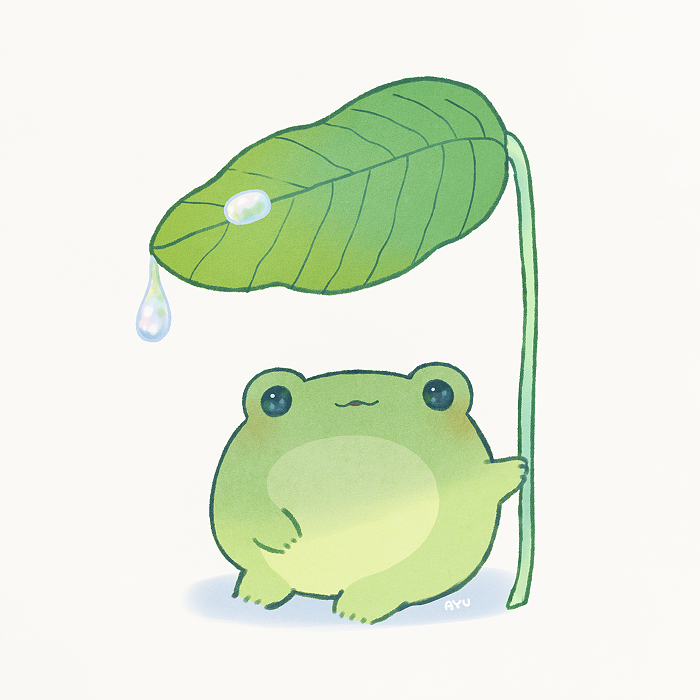 These plants and hides also retain moisture, which will help keep humidity high for species that require it. Use a stick or long piece of bark in the water, leaning onto the plexiglass, to provide your frog with another way from water to land.
These plants and hides also retain moisture, which will help keep humidity high for species that require it. Use a stick or long piece of bark in the water, leaning onto the plexiglass, to provide your frog with another way from water to land.
Frogs receive all their necessary vitamin D3 from their diet and as such do not require full-spectrum reptile lighting. Normal lights will work fine for them.
Caring Specifically for Baby Frogs
Once froglets have absorbed their tadpole tails and become frogs, their care is very similar to that of adult frogs. The only difference is in feeding. Growing frogs require more regular feeding than adults. Feed your frogs daily, usually at dawn or in the evening, depending on the species' natural schedule.
As carnivores, frogs must be fed insects. Crickets are ideal for baby frogs, as pet stores carry them in a variety of sizes. Use insects that are not longer than your frog's mouth is wide. This will prevent choking and ensure that the insects don't harm your frog. Remove uneaten food at dawn if fed in the evening, and in the evening if fed at dawn. As your frogs grow, they can start to take larger insects, like earthworms.
This will prevent choking and ensure that the insects don't harm your frog. Remove uneaten food at dawn if fed in the evening, and in the evening if fed at dawn. As your frogs grow, they can start to take larger insects, like earthworms.
Sprinkle crickets with reptile diet powder two or three times per week to ensure that your frog gets the vitamins and minerals he needs.
Do not touch or hold your baby frog if not absolutely necessary. Not only are baby frogs' skeletal structures fragile, but many frogs absorb chemicals through their skin and may pick up anything you may have on your hands. Baby frogs are especially sensitive to outside chemicals. Observe your baby frog's behavior from outside of his enclosure instead.
Warnings
Do not house baby frogs with larger frogs. A small-enough baby can become a meal for your larger critters.
What frogs eat, how to feed frogs at home
From this article you will learn:
- What frogs eat in the wild;
- Where to look for frog food;
- What are her favorite “dishes” that she can grow at home;
- The order of feeding these amphibians;
- How frogs drink.

Frogs are carnivores that generally only eat moving objects, which means you can only feed frogs live insects!
General Feeding Guidelines for Frogs
frogs are truly generalist predators - they eat anything found in the wild. They will eat spiders, grasshoppers, butterflies and anything that gets in their mouth. Water frogs feed on a variety of aquatic invertebrates.
Each type of frog has its own nutritional recommendations, but in general your pet frog will eat a mixture of the following on the list.
Crickets
They form the basis of your pet frog's diet. This is not because they are the healthiest, but simply because they are the easiest to buy or grow at home.
Meal worms and woolworms
This is another delicious snack for frogs. Like crickets, mealworms are fairly easy to find in pet stores or raise at home. You can also buy them from fishing lure shops, but they won't come with a loaded gut.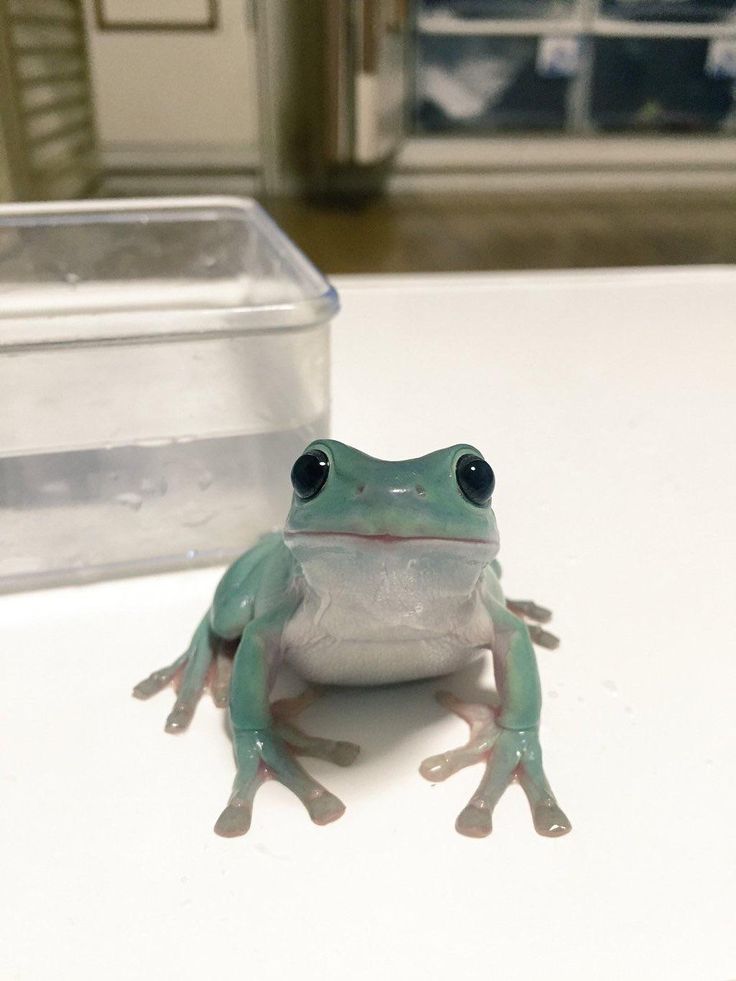
Locusts and grasshoppers
They may be a little harder to find in pet stores or buy for frogs, but they add a much-needed variety of nutrients to your pet's diet.
Caterpillars or worms
They are getting easier to find in pet stores. Be sure to get caterpillars of the right size for your frog, as they can get pretty big!
Bloodworms, brine shrimp and black worms
These, along with other small worms, will be the main diet of water frogs.
Mice
They are part of the diet of large frog species such as Pacman frogs and African bullfrogs. As the frog grows, start feeding it to newborn mice.
You can buy them frozen or live, but be aware that most frogs do not eat frozen. Larger frogs will eat small or even adult mice. If this does not suit you, choose a smaller frog.
Be sure to feed the frog food that is smaller than the width of the frog's head, otherwise the frog's intestines may be damaged. If possible, try to buy insects with intestines, as they are much more nutritious for your frog!
If you can't buy food with a full gut, your frog is at risk of vitamin A deficiency.
Do not feed fruit or vegetables, human table waste, or wild-caught insects to your frog. Wild insects pose a serious risk of pesticide exposure, which can be very dangerous for your frog.
How much and when to feed the frog
The exact schedule and amount of frog feeding depends on its species, age and activity level. Like humans, frogs can become obese if overfed.
To keep your pet healthy and healthy, it is important to feed your frog in the right amount.
- High energy frogs (eg pygmy clawed frogs) and young frogs (less than 16 weeks old) should have frequent access to food. Feed young frogs and high energy frogs every day or even twice a day. This may mean leaving some food, such as fruits or vegetables, in the tank for the insects to eat.
- Medium energy frogs should be fed every other day or every other day. In general, they should be fed about five crickets per meal. Make sure you feed enough to keep the frog from eating within seconds, but don't feed so much that you see crickets the next morning!
- Larger frogs should be fed less frequently.
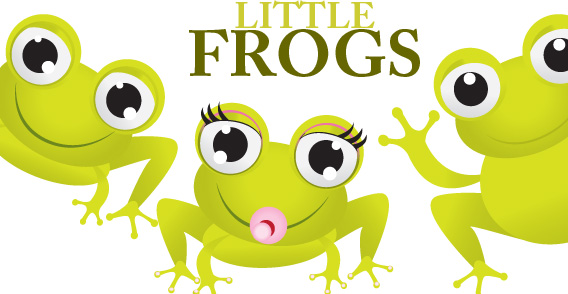 Large mouse frogs may eat infrequently - once a week or once every two weeks.
Large mouse frogs may eat infrequently - once a week or once every two weeks.
Your pet frog should have access to clean, dechlorinated water at all times. You can buy a dechlorinator at most aquarium stores.
Either create a pool of water in the tank, spray the tank regularly, or both. Frogs don't drink through their mouths, so it's important to keep them moist. They “drink” by absorbing water through their skin!
In the wild, frogs eat a wide variety of things. Feeding your pet frog should include a mixture of various insects with an intestine to ensure proper nutrition.
Plan how you will store these live insects before you bring home a new frog!
More about domestic frogs
Domestic frogs - care and maintenance
Domestic frogs - dwarf claws
Eastern fiery pot-toad-care and content
Leopard frogs (meadow frogs)-Content and Care
African frog-Control and maintenance and maintenance pond.
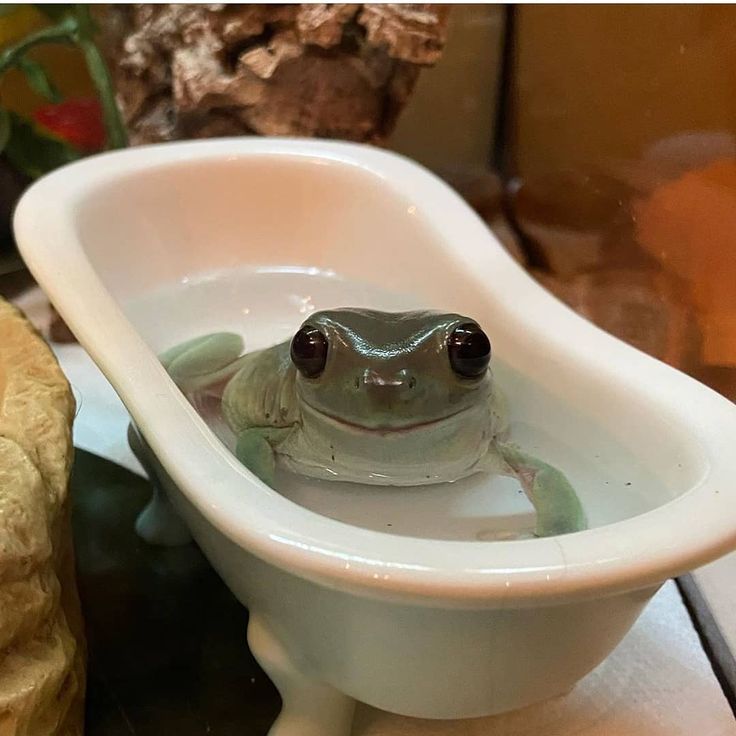 Breeding edible frogs. Is it possible to feed a frog with live food
Breeding edible frogs. Is it possible to feed a frog with live food Frogs are poikilothermic animals, their temperature is directly dependent on the temperature of the environment. Young frogs and tadpoles tolerate cooling down to -1.1 °C, but they do not tolerate high temperatures well. Adult frogs can withstand a minimum temperature of -0.4 to -0.8 ° C and tolerate temperatures of +39°C. At a temperature of +5 ° C, the reflex activity of frogs almost stops.
Pond and lake frogs overwinter in water bodies, while common frog and ground toad - on land, burrowing in sand pits, cellars, under leaves, sawdust, moss or in the ground.
Frogs are harvested for laboratory needs in the autumn season. Pond and lake frogs are caught from reservoirs with nets.
Frogs in large numbers should be kept in special terrariums, which are organized in dark places and basements. Frogs should be in concrete pools filled with clean water. The water level is small (only 3-4 cm), so that the frogs can freely stick their heads above the water. Place a few stones in the pool that protrude above the water so that the frogs can climb on them. It is better if the pool is divided into sections isolated from each other. The depth of the pool and the height of the partitions between the sections is 1-1.2m. It is advisable to change the water frequently, and give the water aged in tubs. The pool from above must be covered with nets. The temperature in the terrarium should be 6-10 °C.
Place a few stones in the pool that protrude above the water so that the frogs can climb on them. It is better if the pool is divided into sections isolated from each other. The depth of the pool and the height of the partitions between the sections is 1-1.2m. It is advisable to change the water frequently, and give the water aged in tubs. The pool from above must be covered with nets. The temperature in the terrarium should be 6-10 °C.
Small numbers of frogs may be kept in enameled tubs, tubs and aquariums. To do this, you must observe the above water level and change it frequently.
Dead frogs or tadpoles must be disposed of in a timely manner.
Maintenance and delivery, especially in winter, of pond, grass and lake frogs are associated with significant difficulties. In addition, more females than males are found among these frog species, making it difficult to conduct a biological test to detect early pregnancy in a hospital setting. Breeding frogs in the laboratory is impossible.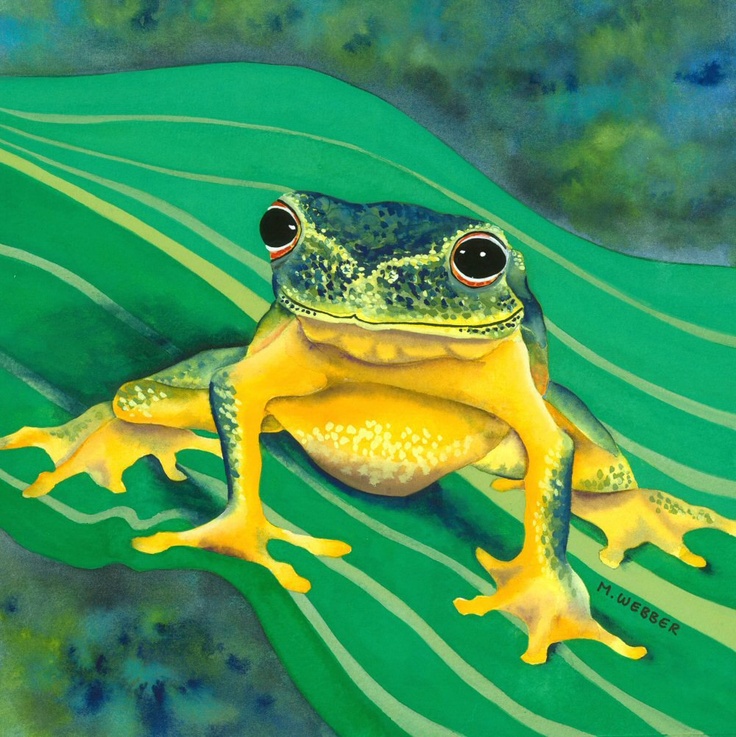 Recently, instead of frogs, earth toads have been successfully used, which are easy to keep throughout the year in simple, specially built nurseries or in basements, in boxes. In addition, according to Jungfes, the ground toad has 100 males for 18.5 females. All this distinguishes them favorably from frogs and speaks of the expediency of breeding ground toads at every hospital.
Recently, instead of frogs, earth toads have been successfully used, which are easy to keep throughout the year in simple, specially built nurseries or in basements, in boxes. In addition, according to Jungfes, the ground toad has 100 males for 18.5 females. All this distinguishes them favorably from frogs and speaks of the expediency of breeding ground toads at every hospital.
Ground toads are kept in terrariums. The bottom should be covered with light porous earth and covered with pieces of moss and turf. The earth is slightly moistened. In a terrarium for toads, it is useful to arrange small ponds (puddles) or put flat dishes filled with water. It is quite possible to keep ground toads in the wild in shady places (where there are puddles), fenced with wire mesh or a concrete wall. In winter, toads are placed in cellars, boxes filled with crushed and moistened peat.
Fat frogs and toads harvested in autumn go without food throughout the winter. By spring, they lose weight, and in order to keep them until autumn, feeding should be established in late spring and summer.
J. Prokopich (1957), studying the question of the diet of the pond frog, showed that 96% of the captured prey are beetles, bugs, mollusks, and 4% of the contents of the stomach are plant foods. Quite often (up to 10% of cases) the phenomena of cannibalism are noted.
You can feed frogs and ground toads with their natural food (earth and flour worms, mollusks, spiders, flies and other insects, small fish). You can feed with finely chopped strips of meat (including frog meat). Food must be taken with tweezers and held in front of the mouth, as frogs and ground toads only capture moving prey. If the animals refuse to take food themselves, then it is necessary to resort to force-feeding, i.e. pushing food into the mouth. Feed should be 1-2 times a week.
HOME KEEPING TOADS AND FROGS
If many people have toads and frogs made of metal and stone, and even with a coin in their mouth as a symbol that brings money and prosperity, then some prefer to have live real amphibians at home.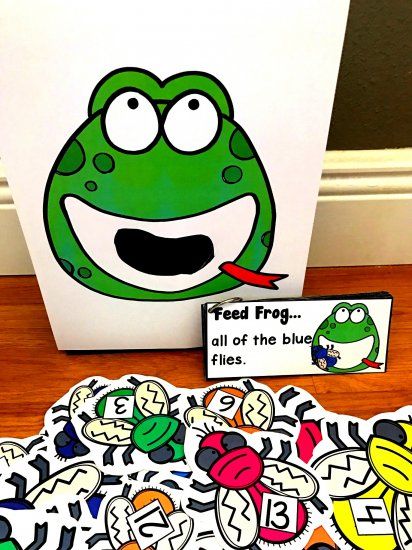 Under natural conditions, toads, and they are gray and green, lead a twilight lifestyle, always avoid bright light. Toads are very useful if they are in a summer cottage or garden plot, they exterminate harmful insects, including pests such as slugs, and in very large quantities. If there is a pond on the site, and there are no frogs, you should try to attract them by laying driftwood and shards near the pond, frogs like to hide under them. Often we cannot deny ourselves the desire to have a piece of wildlife next to us all year round, so we keep frogs and toads at home. Keeping toads at home deprives them of their freedom and natural instincts. However, toads and frogs are often settled in a living corner.
Under natural conditions, toads, and they are gray and green, lead a twilight lifestyle, always avoid bright light. Toads are very useful if they are in a summer cottage or garden plot, they exterminate harmful insects, including pests such as slugs, and in very large quantities. If there is a pond on the site, and there are no frogs, you should try to attract them by laying driftwood and shards near the pond, frogs like to hide under them. Often we cannot deny ourselves the desire to have a piece of wildlife next to us all year round, so we keep frogs and toads at home. Keeping toads at home deprives them of their freedom and natural instincts. However, toads and frogs are often settled in a living corner.
Toads are kept in high humidity and in aquaterrariums specially equipped for their keeping. They should have enough snags, pieces of bark and stones that serve as shelter for the toads, because during the daylight hours it will be impossible to see the toad, it does not come out of the shelter.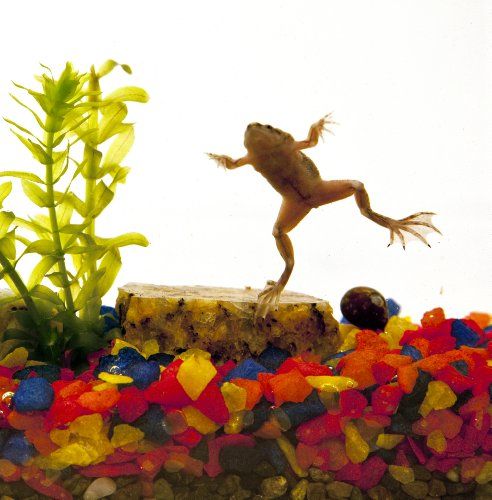 The temperature of the content should be 18-20 degrees. Toads should be fed by running live insects into the terrarium, toads eat only moving insects and invertebrates. Cockroaches, bloodworms, slugs, flies and earthworms are good food for toads. A toad needs 3-4 grams of food per day.
The temperature of the content should be 18-20 degrees. Toads should be fed by running live insects into the terrarium, toads eat only moving insects and invertebrates. Cockroaches, bloodworms, slugs, flies and earthworms are good food for toads. A toad needs 3-4 grams of food per day.
The skin of toads is quite bumpy due to the many venom glands, the largest glands are located behind the eyes. These glands are the most dangerous, they can give out a poisonous secret at a distance of up to one meter. If you take a toad in your hands, the glands located on the body and legs work, you can feel this liquid, it has an unpleasant odor and a bitter taste. In the old days it was believed that they appeared precisely from this secret allocated by the toad.
Keeping frogs in a pet zoo does not differ much from keeping toads. Frogs can live in terrariums with a pond, at a temperature of 18-20 degrees, or in aquariums with created islands or stones protruding from the water, on which frogs can periodically crawl out.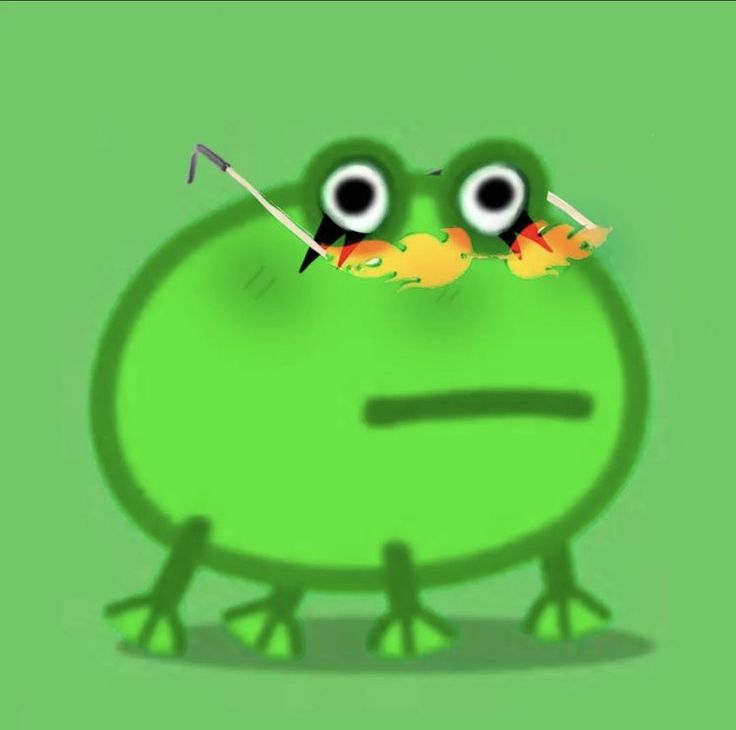 Only now the frogs need to create a very high humidity. If the humidity is low, the frog's skin dries out quickly, which can lead to its death. The food for frogs is the same as for feeding toads, only tubifex is to be excluded. Frogs should be kept in aquariums without fish, because fish can be excellent food for them. Keeping frogs as domestic amphibians is an occupation only for rare exotic lovers. The most popular frog for the home aquarium is the clawed frog. The homeland of such a frog is Africa, in nature, frogs live in reservoirs with stagnant water and often move overland in search of another reservoir, but they cannot live without water. The bottom of the aquarium or aquaterrarium should be covered not with sand, but with fine gravel, frogs dig in it, and the water becomes cloudy. From plants for an aquarium with frogs, it is better to use large aquatic plants with a powerful stem, otherwise the frog can damage them by simply breaking them, and it is better to place plants floating on the surface, they can also serve as islands of land for frogs.
Only now the frogs need to create a very high humidity. If the humidity is low, the frog's skin dries out quickly, which can lead to its death. The food for frogs is the same as for feeding toads, only tubifex is to be excluded. Frogs should be kept in aquariums without fish, because fish can be excellent food for them. Keeping frogs as domestic amphibians is an occupation only for rare exotic lovers. The most popular frog for the home aquarium is the clawed frog. The homeland of such a frog is Africa, in nature, frogs live in reservoirs with stagnant water and often move overland in search of another reservoir, but they cannot live without water. The bottom of the aquarium or aquaterrarium should be covered not with sand, but with fine gravel, frogs dig in it, and the water becomes cloudy. From plants for an aquarium with frogs, it is better to use large aquatic plants with a powerful stem, otherwise the frog can damage them by simply breaking them, and it is better to place plants floating on the surface, they can also serve as islands of land for frogs.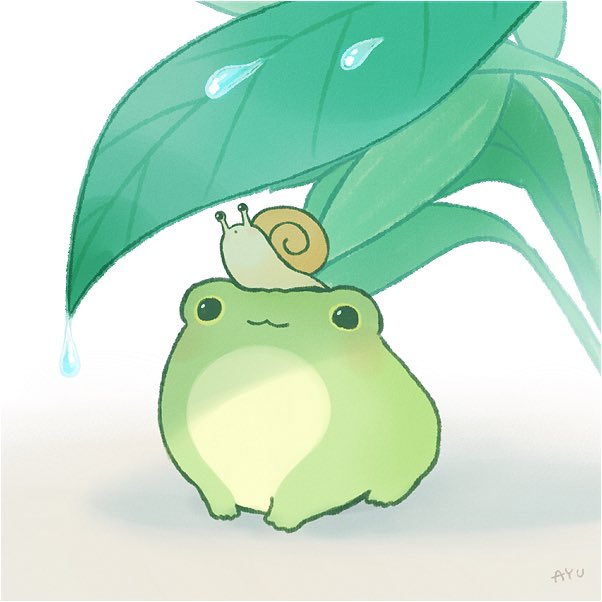
In an aquarium with frogs, you need to constantly change the water, or install filters, frogs emit a lot of organic matter, and the water quickly becomes cloudy and dirty. Compressors can be omitted, as frogs breathe when leaving the water on the islands. From above, the aquarium should be covered with glass or a grate, frogs can easily jump out of it.
If you have a pair of frogs, they can reproduce by laying eggs. Aquarium clawed frogs can be observed laying eggs 3-4 times a year. Tadpoles emerge from the eggs, and then, after about two months, frogs develop from them. Tadpoles and frogs can be fed fish food. Frogs in an aquarium can live up to 15 years.
There are many types of frogs, but some of them are very dangerous. These are toad frogs and spadefoot frogs. It is better not to keep them at home. Frogs imported from America are even more poisonous and dangerous. The poison secreted by toads and frogs will not cause serious poisoning in humans, but getting on the mucous membranes can lead to inflammation, redness and irritation.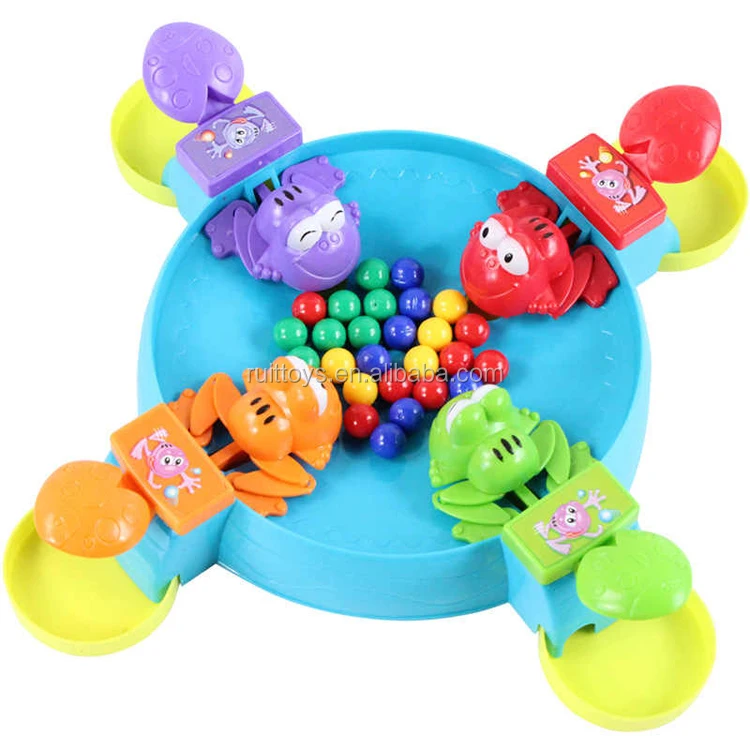 Skin areas should be thoroughly rinsed with water immediately after exposure to the poison.
Skin areas should be thoroughly rinsed with water immediately after exposure to the poison.
Frogs are mostly green, gray and white, with a yellow belly, but cannot be colored. Be careful, colored frogs are imported from China, these are artificially colored frogs.
views: 12199
07/26/2017
Everyone knows that frog legs are considered a gourmet delicacy in France, and many fans of this dish around the world idolize their refined and delicate taste, which slightly resembles chicken.
Frog dishes adorn the menus of the most famous and respectable restaurants in Belgium, Italy, Spain, Greece, Great Britain, Holland and many other European countries.
Frogs are also in high demand in countries such as China, Vietnam, Laos, where they are bred on special farms, since frog meat is valued much higher than veal and costs an order of magnitude more expensive. In the East, no one will be surprised by the assortment of a supermarket, where, next to the hams of various animals and birds, frozen paws of these amphibians will lie.
In Peru, they even manage to add frog meat to chocolate and biscuits after drying and grinding it. It is believed that such an unusual delicacy cures anemia and helps women with infertility.
Fried frog legs have also appeared in the menu of many Ukrainian cafes and restaurants (as a rule, they prefer to sell French or exotic cuisine). True, not every frog goes into food, but only large green ones, which are the edible species.
It is noteworthy that in many countries of the world, frog legs are equated with pike and even sturgeon caviar in terms of their biological value.
frog species
Only five varieties of frogs are found in the reservoirs of Ukraine: grass frog ( lat. Rana temporaria ), moor ( lat. Rana arvalis ), quick ( lat. Rana dalmatina ), pond ( lat. Rana lessonae ) and lake ( lat. Rana ridibunda ). The first three species have a brown and brown body color, and the last two species are combined by scientists into a group of "green frogs", which, when crossed, give the very famous edible species.
For the first time a large green frog as a separate species was described by Carl Linnaeus back in 1758. It was he who gave her a name (lat. Rana esculenta), which translates as "edible frog." This hybrid species is widely represented in the reservoirs of Transcarpathia and lives in the Danube Delta.
During the Soviet Union, these amphibians were massively exported to France, since their value in foreign currency was three times (!) Higher than the price of expensive fish species. Every year, up to eighty tons of this first-class product were exported from the country.
At present, due to the spread of diseases and massive epidemics of birds, pigs and cattle, the demand for frog meat has increased dramatically. True, in Ukraine it still remains quite low, since the use of a frog by many residents of the country seems unusual and unnatural, therefore, today, the most promising direction is the cultivation of amphibians for export.
Description of the edible frog
When creating optimal conditions for growth and development, individual specimens of frogs can gain weight up to one and a half (!) Kilograms, but on average their weight does not exceed one kilogram.
An amphibian reaches sexual maturity at the age of three years and one female is able to lay up to fifteen thousand eggs during the year.
Frog rearing
Growing an edible species of frogs for commercial purposes is simple and technologically similar to breeding ordinary pond fish (the fattening period to obtain a marketable species is from twelve to twenty months).
To start, you need frog caviar, which can be collected in a pond during spawning, and in three or four years, the amphibian population will increase tenfold.
It is desirable to grow caviar in a closed pond with clean running water, since open ponds significantly increase the mortality rate of the population. The incubation room should be warm (it is necessary to maintain the temperature at least twelve degrees Celsius), bright and clean. It is advisable to change the water once every three or four days, while first passing it through the filter (or letting it settle), since highly chlorinated water can kill the entire population of frogs.
Consideration must also be given to the ground. An ideal basis for an incubation pond is a mixture of earth, peat, crushed sphagnum (peat bog moss), expanded clay or charcoal (in a ratio of 3:1:1:1). Such soil will not turn sour, and harm the skin of tadpoles and young frogs.
After mass hatching of tadpoles (which grow for about
four months old), they are intensively fattened until they turn into young frogs, and then they are moved to an open pond.
It is desirable to leave the largest and healthiest frogs for subsequent reproduction, thus forming a strong breeding stock of frogs.
Diet
The diet of frogs (at all stages of development) is quite varied. The food is based on small invertebrates (bloodworms, worms, caterpillars), crustaceans and insects (mosquitoes, flies, beetles). All swimming, jumping, crawling and flying small animals that a frog can swallow at one time are used.
Young frogs need to be supplemented with vitamins to prevent rickets.
Upon reaching marketable weight, the frog is slaughtered with a mallet, the skin is removed, the legs are separated, packaged and frozen. This is how they are implemented.
Frog legs in Europe range from $4 to $6, while live amphibians go for $1 to $4 per kilogram (equivalent to about sixty adults).
Breeders need to remember that catching an adult frog is not easy, because it can overcome a distance of three (!) Meters from one jump, and at the same time it can knock down even an adult person. This "animal" is able to swallow a mouse, small snake or duckling.
However, the same French prefer to eat frogs of a much more modest size (weighing about one hundred grams).
Delicious frog legs are easy to make. To begin with, they are kept in cold water with lemon juice (like asparagus), and then fried in vegetable oil in breadcrumbs or batter. The dish turns out to be crispy, fragrant, tender, and small bones are not a hindrance for enjoyment.
While working in the garden, you can often stumble upon frogs unexpectedly jumping out of the green grass or important and clumsy toads barely crawling out. Many of these animals are disgusted. Meanwhile, it should be remembered that there are benefits from frogs. They are tireless hunters for all sorts of small pests, bringing invaluable benefits.
The information in the article will allow you to get acquainted with the life of these animals, perhaps many will even feel some sympathy for these interesting creatures.
Before we find out what the frog eats, let's present its description.
General information about toads and frogs: differences
Toads and frogs are tailless amphibians living in water and on land. Even when leaving the water, these animals are very dependent on it. In addition to the pulmonary, they also have active skin respiration, which allows amphibians to stay under water for a longer time. But dry air and prolonged exposure to the sun's rays have a detrimental effect on them.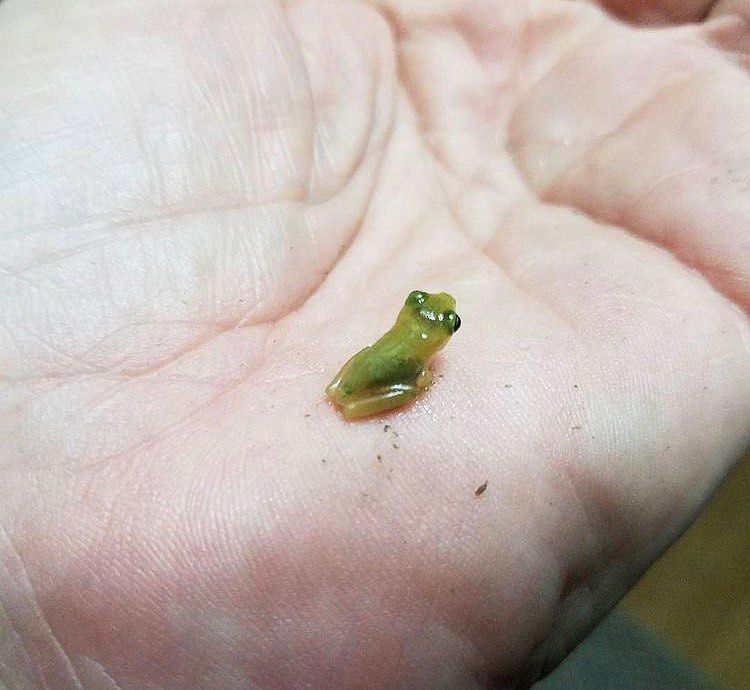
What does a frog eat? You can find out more about this in the article below.
Frogs and toads are closely related. Their difference lies in the fact that frogs have smoother skin, long strong hind legs have well-developed membranes between the fingers. All this helps the frogs to jump well and swim quickly. And the toad has dry skin covered with "warts", their paws are weak and short, allowing them to move only waddling or in short jumps. The membranes between the fingers are not developed, and therefore they swim poorly, and spend less time in the water (in fact, only during the breeding season).
It is difficult to determine what the frog eats by its structure and appearance, but it can be assumed. She has a flat back and head, and her eyes often protrude above the water surface like liquid bubbles, without betraying the animal itself. The hind legs are strong, like a spring, and the front paws, arranged like palms, are grasping. The jaws of the frog are studded with sharp, small, inward-facing teeth.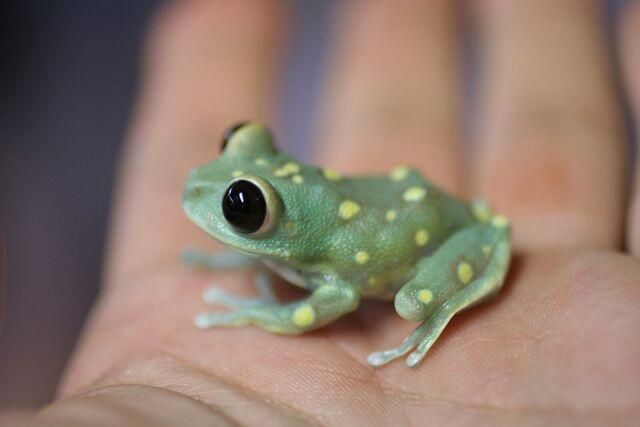 A sticky tongue is located in a wide mouth. Comparing all of the above external signs, we can assume what the frog eats - mostly small aquatic inhabitants.
A sticky tongue is located in a wide mouth. Comparing all of the above external signs, we can assume what the frog eats - mostly small aquatic inhabitants.
Distribution
This family (true frogs) belongs to the anurans order. The composition of the latter is numerous, it includes 32 genera and about 400 species. Most of them are inhabitants of the jungle (wet tropics).
The largest of the tailless amphibians is the goliath frog (3 kilograms), which lives on the coast of the Republic of Cameroon in Africa. Most recently, the smallest frog was discovered in New Guinea - the size of a little finger nail.
In central Russia, mainly varieties of the common and common toad live. They are widely distributed in Russia to Sakhalin, as well as throughout Europe and Africa (northwest).
Most of these amphibians have a modest inconspicuous coloration, but some of the outfit can be quite bright, especially for poisonous species that live mostly in the tropics.
Types of frogs and toads
Before we find out what frogs eat in a pond, as well as in other natural and domestic conditions, let's consider the most common varieties of these amphibians. Their life (toads and frogs) is closely connected with water, however, there are species that, in their adult state, mainly live and hunt only on land.
There are 4 types of frogs in central Russia: lacustrine, pond, herbaceous, moor. The first two species are green in color, the second are closer to brown.
Among the inhabitants of Russian gardens, moor and grass are more common. The first has a protective coloration that allows it to be invisible on the ground, but it is much smaller than the grass in size. The second has a gray-brown or brown back with spots of different colors, and the belly is mostly light with dark spots.
In addition to the common frog, the Siberian frog also lives in Siberia. Its distinctive feature is pink spots on a brown abdomen.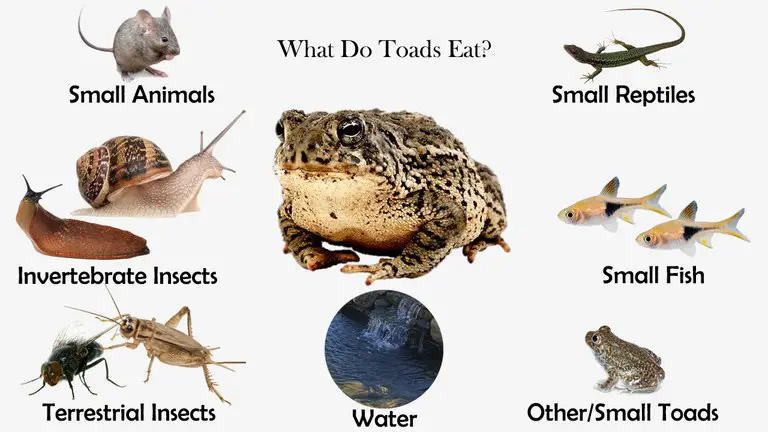
Among toads, the most common are 2 species:
- common, or gray, with a dark brown back;
- green with large green spots on a light gray back.
Feeding characteristics
All types of frogs are tireless in obtaining food. What does a frog eat? It is known that the grass frog eats about 1300 insects - pests of gardens and orchards during the entire summer period. And the moored one exterminates many pests, including stinky bugs and beetles, which even birds shun.
As a rule, frogs forage during the day, and toads destroy pests mostly at night and at dusk.
What does a frog eat and how does it do it? They, like toads, are insectivorous animals. Frogs have teeth only on the upper jaw, and toads do not have them at all, so they have nothing to bite off pieces of food with. In connection with these features, food is swallowed whole by frogs and toads. They catch their prey with the help of their original tongue - long, strong and forked at the end. It is thrown out of the mouth with lightning speed in the direction of the victim, and then, due to the fact that it is sticky, it returns back with the prey already stuck.
It is thrown out of the mouth with lightning speed in the direction of the victim, and then, due to the fact that it is sticky, it returns back with the prey already stuck.
Another curious fact is that food enters the esophagus through the eyes. When blinking, the eyes sink deeper, pushing food into the esophagus.
Toads have an excellent appetite. The main food for them is invertebrates: worms, insects, bugs, spiders, caterpillars, molluscs, and so on. More than half (60%) of all insects eaten by the toad are agricultural pests. Also, these animals feed on slugs. Many gardeners observe unpleasant slugs on strawberries, which usually hide in damp ground during the day, and come out to eat soft juicy fruits of sweet ripe strawberries in the evening. It is very difficult to fight them. Just in this toads are great helpers.
Adult frog is a carnivore. The frog feeds on mosquitoes and other types of insects. For the lake, tasty prey are fish fry. As a result, fish farms suffer considerable damage. Hiding in shallow water, the frog waits for a flock of fry, and after waiting for them, it sharply opens its mouth, where a bunch of fish are involved in the flow of water. Tadpoles may also be in the mouth with fry.
Hiding in shallow water, the frog waits for a flock of fry, and after waiting for them, it sharply opens its mouth, where a bunch of fish are involved in the flow of water. Tadpoles may also be in the mouth with fry.
In the stomachs of frogs, plant remains are also often present, because part of the leaves and flowers on which their prey sat on sticks to their tongue. All this is quickly swallowed by the frog, after which it again goes for new food.
The larval stage is very similar in different frog species.
Tadpoles hatched from eggs do not have a mouth opening. The embryonic supply of nutrients ends after about seven days, when their length reaches 1.5 cm. During this period, the mouth breaks through and self-feeding begins.
The main food of tadpoles is unicellular algae. Random impurities that are absorbed by the frog's body along with the main food are mold fungi, protozoa, and other microorganisms.
The tadpole's mouth apparatus is well adapted for scraping off algae plaque and is a kind of "beak" surrounded by fringed lips.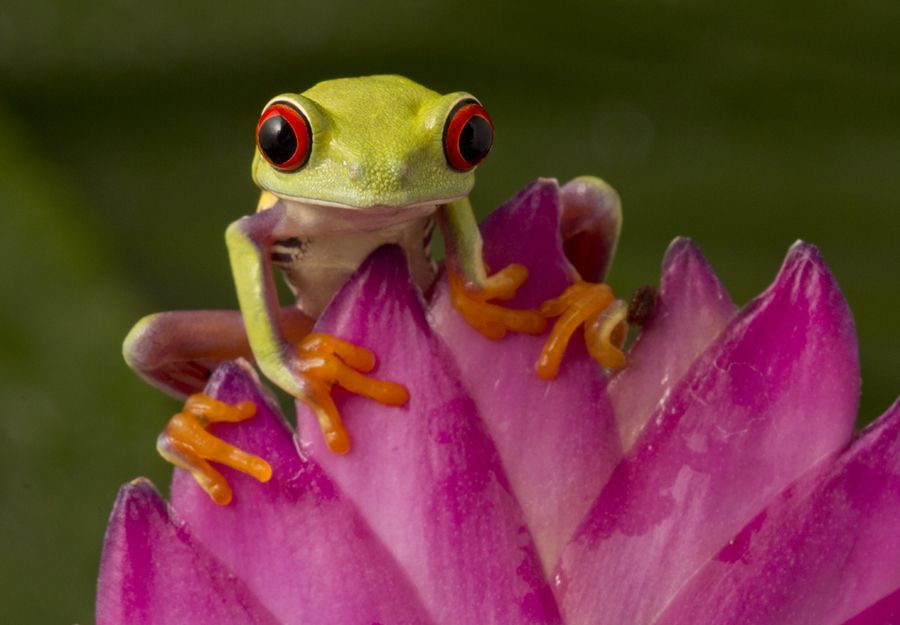 The lower one has rough outgrowths and is larger than the upper one. Tadpoles feed during the day, being in heated water on the shallows and near the coast, forming mass accumulations (up to 10,000 pieces). Not everyone survives from them, since frog larvae serve as food for birds, fish and many other inhabitants of the reservoir.
The lower one has rough outgrowths and is larger than the upper one. Tadpoles feed during the day, being in heated water on the shallows and near the coast, forming mass accumulations (up to 10,000 pieces). Not everyone survives from them, since frog larvae serve as food for birds, fish and many other inhabitants of the reservoir.
Tadpoles turn into frogs of the year. They are pretty greedy. In the filled state, the volume of their stomach exceeds 1/5 of the total mass.
One more curious detail - with insufficient amount of animal food in the reservoir, the tadpole hibernates in the larval stage, postponing the transformation into a predator until spring.
Aquarium frogs
Especially popular among aquarists is the clawed frog, whose skin secretions have the effect of a natural antiseptic that disinfects water well. Such a frog is usually planted in an aquarium with fish that have some kind of infection. However, there must be a mesh partition between them, since the frog can eat its “patients”.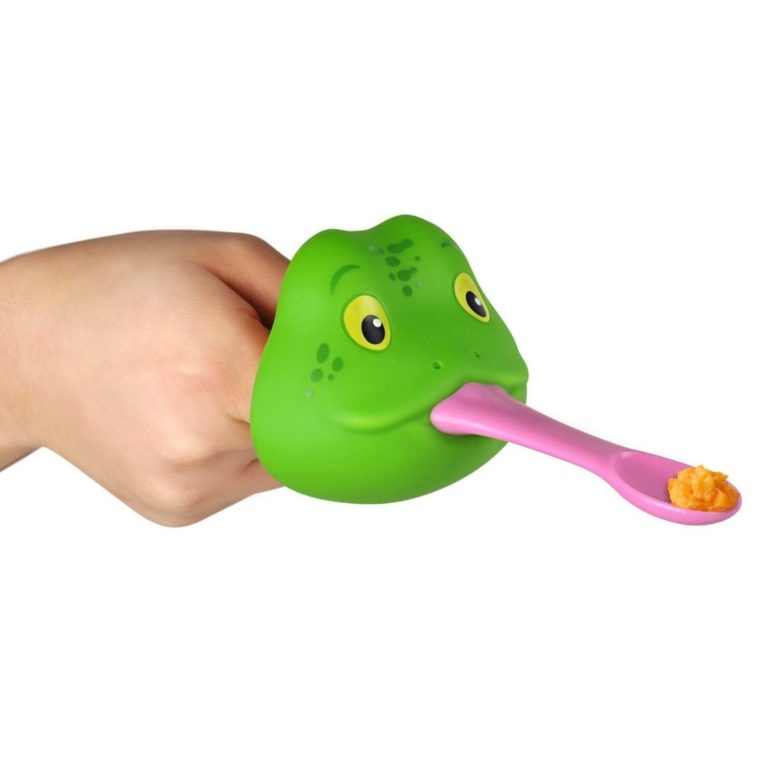
Usually, amphibians living in an aquarium feed on live food: earthworms, daphnia, bloodworms, etc. Due to the fact that in captivity frogs move little, they tend to become obese. They should be fed no more than 2 times a week. They may also eat thinly sliced lean meats or fish.
What do frog tadpoles eat at home? In the very first days, milk powder is suitable for them (baby formula is also good). In the second week, mixtures of insects and herbs can be introduced into the diet after a good steaming in the oven or in the sun to avoid various putrefactive processes.
Beef liver and small bloodworm are introduced in the last days of metamorphosis to strengthen the body of small frogs, but all this should be crushed to the smallest size.
Conclusion
Creating the animal world, nature has shown incredible ingenuity. Amphibians can be attributed to the number of amazing miracles.
They emerged from the World Ocean millions of years ago, but their connection with the water element was not interrupted. And they begin their life in the water.
And they begin their life in the water.
Frogs, leading an aquatic lifestyle, have long taken a strong place in amateur aquariums. And the touching little frogs, which are now sold in almost every pet store, cause an irresistible desire among people who are inexperienced in aquaristics to buy, as they say, "there are those two white ones and this gray one." But no matter how cute they are, let's first figure out what kind of frogs they are, what conditions they need and with whom they can live in the same aquarium.
Two types of frogs are currently kept in aquariums: the smooth clawed frog - xenopus (Xenopus laevis), which has been bred in captivity for many years, and the dwarf frog - hymenochirus (Hymenochirus boettgeri), which has become popular not so long ago. Adult frogs of these species vary greatly in size, appearance, behavior, and content. Frogs in pet stores are often kept in the same aquarium and when selling, they do not always focus on their species.
Clawed frog.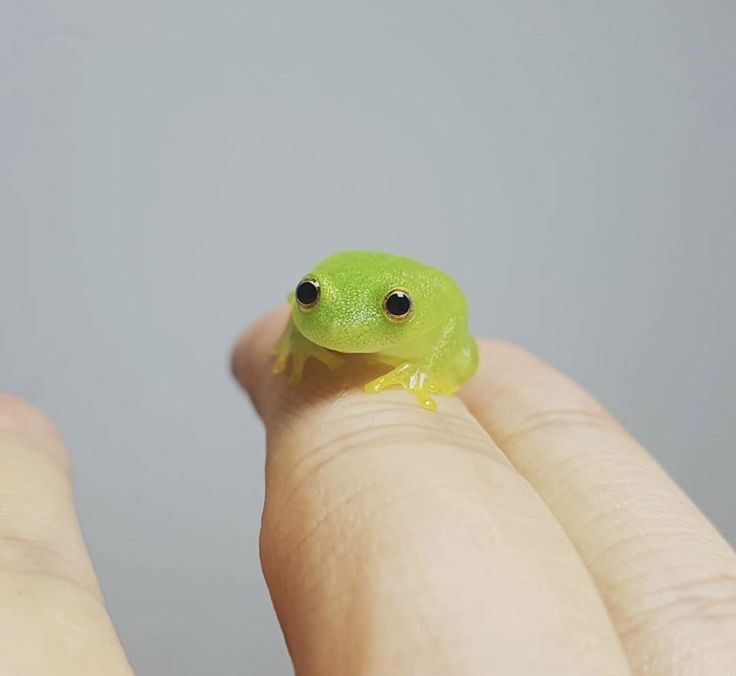
So, if aquarium frogs are white or pinkish, with red eyes, then regardless of size they are clawed. The albino clawed frog was artificially bred at the Moscow Institute of Developmental Biology for laboratory experiments.
If a small frog is grayish, brownish or olive in color with dark spots, then to determine the species, you should pay attention to the length and thickness of its limbs, the presence of webbing between the fingers of the front paws and the pointedness of the muzzle. Wild-colored clawed frogs are more dense, they have thicker legs with bandages, like babies, a rounded muzzle, and there are no webbing on the fingers.
Hymenochirus, on the other hand, has membranes, long and slender legs, and a pointed muzzle. The size of an adult hymenochirus, as a rule, does not exceed 4 cm, while the clawed frog grows up to 10–12 cm.
These frogs also behave in different ways. They are active, strong and completely shameless. But they are clearly visible, they have large expressive faces and they have a habit of stretching out beautifully to hang in the thickness of the aquarium water.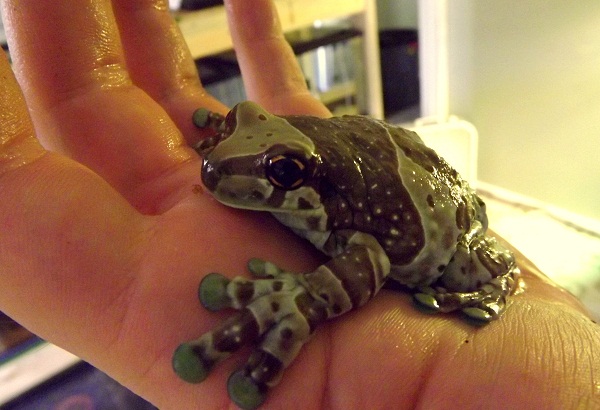
Hymenochirus are calmer, quieter, slower and more delicate. They slowly crawl along the bottom, climbing on underwater objects and periodically freezing for a long time. As one amateur aptly put it, pygmy frogs resemble "meditating scuba divers." They almost do not damage plants, do not disturb fish (they simply do not have such an opportunity due to the size of their body and mouth), pollute the aquarium a little.
In a large aquarium, they are almost invisible, because they constantly hide on the bottom or in thickets of plants, and if active fish live nearby, then hymenochiruses may not keep up with food.
Aquarium frogs: maintenance and care
Both species are not too demanding in terms of keeping conditions. For clawed frogs, an aquarium of 20-30 liters per couple is enough, while it needs to be filled with water by half or a third. The aquarium should be closed with a lid or net. The soil is a large pebble. The aquarium is equipped with a compressor or a small internal filter, you can use a waterfall filter, but there should not be a strong current. There is no need for bright lighting.
There is no need for bright lighting.
The water temperature is about 22-25°C, xenopuses are practically indifferent to the chemical indicators of water. The exception is the content of chlorine and fluorine in the water, so it is recommended to defend it before adding it to the aquarium for at least 2-3 days. They change the water once or twice a week for 20-25%, a number of authors recommend changing less often, as it becomes cloudy.
Only hard-leaved plants may be planted, always in pots, otherwise they will be dug up immediately. Some lovers of these animals act as follows: they put a pot with a houseplant with hanging shoots next to the aquarium, and place these shoots in the aquarium. In this case, the aquarium becomes green, and the roots of the plant remain intact.
For hymenochiruses, the volume of the aquarium can be even smaller, 1-2 liters of water for such a frog is enough.
A cap is required - hymenochiruses, especially those caught in the wild, often try to escape.
They require a minimum water temperature of 24°C. A filter or compressor is desirable, but it should not be too powerful to leave areas of still, stagnant water in the aquarium.
At the bottom, it is necessary to equip small shelters under which these quivering creatures can hide. Plants are very desirable, it is good if they form dense thickets in places. It is also better to plant them in pots. It is necessary to equip the aquarium with lighting, since hymenochiruses sometimes like to rise among the thickets to the surface and bask under the lamp, sticking their head and upper body out of the water.
Feeding
Decorative aquarium frogs - both xenopuses and hymenochiruses - are preferred.
For claws, these can be mealworms, earthworms, crickets, bloodworms, fry and tadpoles. You can give pieces of liver, meat, fish, shrimp with tweezers.
Clawed frogs should not be fed tubifex, pork, fatty beef.
Hymenochirus are fed small bloodworms, live daphnia or fish. Dry and immobile frog food is usually ignored. Food for adult xenopus and hymenochirus should be given twice a week.
Dry and immobile frog food is usually ignored. Food for adult xenopus and hymenochirus should be given twice a week.
The feeding behavior of these two frog species also differs. Spurs have an excellent sense of smell, in addition, they have a very developed sense of touch (the receptors are pits located on the sides of the frog and resemble the lateral line of fish). Therefore, frogs are good at detecting smells and the slightest movements of water, quickly find food and greedily pounce on it.
Hymenochirus, on the other hand, usually need to bring food directly to the nose. You can teach them to feed in a certain place or according to a certain signal (for example, tapping with tweezers), but they will take a long time to get to the food, as if thinking along the way whether it is worth doing this at all.
Xenopus are extremely voracious and therefore prone to obesity, so the amount of food they eat must be strictly controlled - a healthy frog must remain flat.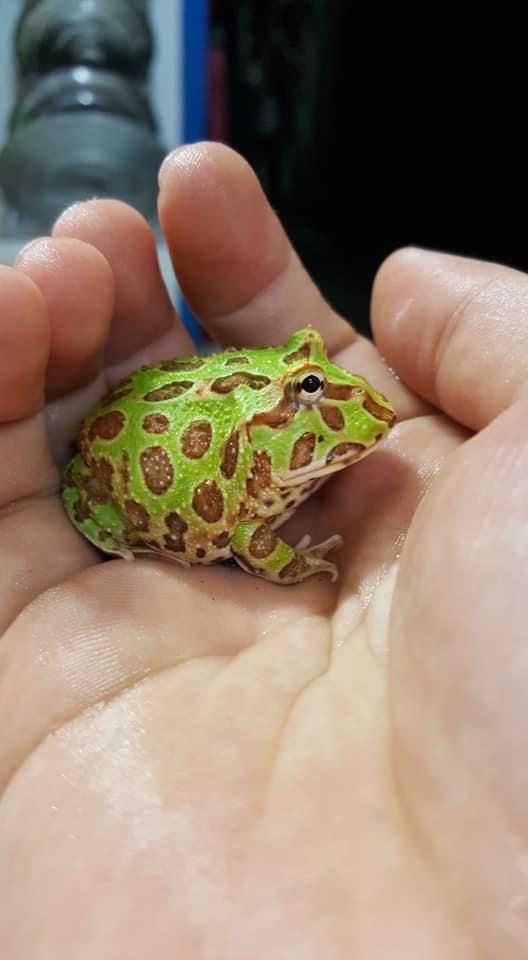
As for the clawed frog, knowing the peculiarities of its behavior, one can answer unequivocally - it has nothing to do in an aquarium with fish.
She will swallow everything that fits in her mouth, wipe out most of the plants, dig up the soil, raising the dregs, and move carefully placed scenery.
In addition, she does not like fresh water with a good current, and most fish will not like the swamp she is used to.
The only advantage of cohabitation between fish and clawed frogs is that the frogs' skin mucus contains antimicrobial substances that can have a curative effect on sick fish. But at the current level of development of aquarium pharmacology, this can hardly be considered a serious argument. If you really want to do without chemistry, it is much easier to place a sick fish in a small container, where the frog had been for some time before.
Some aquarists advise keeping xenopus with , as they do well in old water and breathe atmospheric air. But why do it? A separate small aquarium with frogs will take up very little space, and everyone will be fine as a result.
But why do it? A separate small aquarium with frogs will take up very little space, and everyone will be fine as a result.
Things are not so scary with hymenochiruses. It is believed that they get along well with calm, not too large, non-predatory fish. They will not violate the beauty of the aquarium either. However, in a large aquarium, hymenochiruses spend a lot of time in shelters, so it is almost impossible to observe them, and it can be quite difficult to control the process of feeding them.
Diseases of frogs
Aquarium frogs may experience the following health problems:
In the treatment of frogs, preparations for tropical aquarium fish are usually used, choosing them according to the causative agent of the disease (anthelmintic, antifungal or antibacterial). Sick frogs are isolated. With dropsy, a puncture of the skin is often effective.
It should be known that individuals usually fall ill if they live in unsuitable conditions for them, are prone to obesity or experience prolonged severe stress.
And finally, some interesting facts about clawed frogs:
- the clawed frog was the first vertebrate to be cloned;
- at the beginning of the 20th century, clawed frogs were used to diagnose short-term pregnancy: if a frog is injected with the urine of a pregnant woman, it starts spawning under the influence of chorionic gonadotropin;
- The clawed frog does not have a tongue, therefore, when eating prey, it helps itself with its front paws, and it cannot bend its fingers, it keeps them stretched out, as if eating with Chinese chopsticks;
- When clawed frogs accidentally entered the waters of the tropical part of the United States, they destroyed native species of frogs there, therefore in some states the keeping of clawed frogs is prohibited, while in others it is limited.
Fortunately, keeping frogs is allowed in our country, so everyone can get these undemanding funny animals at home, watch and care for them, getting a lot of positive emotions and acquiring the skills of keeping an aquarium.

